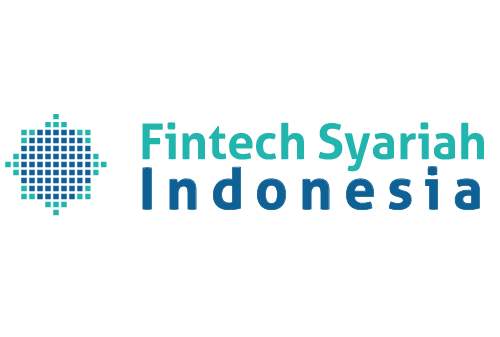Author Guidlines
Types of paper
The journal accepts original research papers, theoretical or conceptual papers. The paper should be written either in standard Indonesian or English and follow the Author's Guidelines in the journal.
How to submit your paper?
The paper must be in Microsoft Word format (doc, docs, RTF) and must be submitted electronically to the editorial team at the e-journal portal address: https://ejournal.upnvj.ac.id/iesbir
General Guidelines
As part of the submission process, authors are required to check off their submission's compliance with all of the following items, and submissions may be returned to authors that do not adhere to these guidelines.
- The paper must discuss the topics of Islamic Economics, Islamic Banking and Finance, Islamic microfinance, Zakah, Waqf, Islamic Philanthropy, halal economy, or other related topics.
- Ensure that the paper follows the journal template.
- The paper should be between approximately 5000-8000 words including tables, figures, references, and appendices intended for publication.
- All submissions should be in Microsoft Word or RTF document file format.
- The paper has never been published or submitted anywhere.
- The paper is typed by considering the use of standard languages. It should be spell-checked by the facility available, such as Grammarly.
- The copy editor of the Islamic Economics and Business Review (IESBIR) is responsible only for minor typos and understandable grammatical errors
Structure of Paper
1. General Structure
The fieldwork research-based paper should contain an introduction, literature review, method, result and discussion, and conclusion. Meanwhile, the conceptual or theoretical paper should include an introduction, discussion, and conclusion. The editors of theIslamic Economics and Business Review are allowed to make any changes to the submitted articles' format before publication to ensure the consistency of all published articles without changing the content of the articles.
2. Title
The title of the article should be brief, clear, and informative which identifies the content. It also should be not more than 12 words while each word of the title must be capitalized.
3. Author and Affiliation Name
All submitted papers should be completed in the author/s’ full name without any academic title. And it should be accompanied by the author/s’ institutions, affiliation address, and email addresses.
4. Abstract
The abstract should be in one paragraph, written in both English and Indonesian, and between 150 and 200 words. It should contain background, purpose, method, result, and implication with no references cited.
5. Keywords
It is a maximum of 5 keywords in the form of words or phrases that represent the content of the paper. The keywords are separated by a semicolon (;).
6. Introduction
The introduction contains a brief description of the study that consists of clear research background, research problem, and a brief review of relevant literature from previous research to show the limitation of previous research, the expected goals, and the novelty of the research.
7. Literature Review
It contains a review of the previous research and theoretical studies related to the topics of the paper, that are employed to build the research framework.
8. Research Methods
It contains the research design, population, sample, techniques of data collection, and analysis method.
9. Result and Discussion
The result of the article contains the data analysis written descriptively. The discussion presents each of the findings compared to relevant theories or previous studies, actual facts, comments, and reasonable analysis from researchers. The utilization of sub-chapter in discussion corresponds to the needs of discussion.
10. Figure
Figures should be numbered consecutively (e.g., Figure 1, etc.). The caption should be centered in alignment and placed under the figure.
11. Tables
Tables should be arranged consecutively (e.g., Table 1, etc.). The caption should be centered in alignment and placed above the table.
12. Mathematical Formula
Mathematical formulas should be numbered and clearly presented using Microsoft Equation.
13. Conclusion
It contains a conclusion and suggestions. The conclusion briefly illustrates the results that address the hypotheses and/or research purposes or findings. It is the summary of the research and discussion, relevant to the findings, presented descriptively, not numerically. Suggestion provides things expected to conduct related to further ideas the research has proposed.
14. Bibliografi
Every reference source referred to in the research/study must be included in the bibliography. All referenced bibliography must be included in the text of the article (body note). This section includes a bibliography and literature from primary reference sources (such as journal articles with DOI), and at least 80% are articles published in the last 10 (ten) years. Each article has at least 20 references. It is highly recommended to use the Reference Manager application (Mendely, Zotero, Endnote, etc) in the process of writing articles and citations. The format for writing references and citations uses the APA (American Psychological Association) style. Each citation must have a link with a reference source listed in the bibliography.
exp:
Fitria, H., & Yani, E. A. (2014). Faktor-Faktor Yang Mempengaruhi Minat Mahasiswa Memilih Perguruan Tinggi Ekonomi Islam (Studi Kasus : Stei Sebi). Jurnal Ekonomi Dan Perbankan Syariah, 2(1), 99–130. https://doi.org/10.46899/jeps.v2i1.144
Hermanto. (2017). Perilaku Mahasiswa Ekonomi di Universitas Esa Unggul Dalam Melakukan Investasi di Pasar Modal. Jurnal Ekonomi, 8(2), 1–12. https://doi.org/https://doi.org/10.47007/jeko.v8i01.1733












